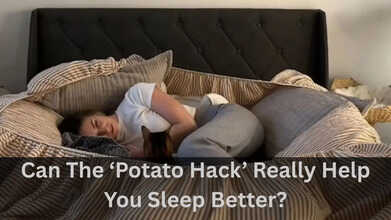- Health Conditions A-Z
- Health & Wellness
- Nutrition
- Fitness
- Health News
- Ayurveda
- Videos
- Medicine A-Z
- Parenting
- Web Stories
3 Shocking Stroke Risk Factors You Need To Control NOW

3 Shocking Stroke Risk Factors You Need To Control NOW
Stroke is among the preventable causes of death and disability worldwide, striking millions each year. Though people have a general awareness of some risk factors, according to a new study published in the journal Neurology, three significant risk factors do not only increase the chances of having a stroke but also increase the possibility of it leaving a person debilitated or fatal. The three major risk factors are smoking, high blood pressure, and atrial fibrillation-symptoms, all of which, when poorly managed, can lead to a severe stroke, thereafter requiring lifelong care.
It followed nearly 27,000 participants from 32 countries at a mean age of 62. Half of them had experienced a stroke with 4,800 being severe and the 8,600 others mild to moderate strokes. After adjusting other aspects of the study, they find a tight association between high blood pressure, atrial fibrillation, and smoking with the severity of the stroke.
This is a priority area according to Reddin; its management is a priority, more so for low- and middle-income countries that are witnessing an alarming surge in hypertension and stroke rates. For such countries, where access to health care may not be readily available, public health approaches with a focus on lifestyle changes and adherence to antihypertensive medication can significantly lower the chances of stroke, especially among the younger population.
3 Main Risk Factors for Stroke
1. High Blood Pressure (Hypertension)
For quite some time, high blood pressure has been recognized as one of the major risks associated with stroke. According to the new study, the patients suffering from high blood pressure were 3.2 times more likely to suffer from a severe stroke and 2.9 times more likely to suffer from minor to moderate stroke than normal-blood-pressure patients. The opening and weakening of blood vessels due to hypertension can pave way for clots to form and begin their journey towards the brain.
2. Atrial Fibrillation (AFib)
It is also now known that AFib, an abnormal heart rhythm results in poor blood circulation, while increasing severe stroke risk. Such a patient, however, stands to have a 4.7 times chance of experiencing severe stroke and a 3.6 time chance of a mild or moderate stroke. AFib therefore increases the propensity for the formation of blood clots within the heart, which may be circulated to the brain, resulting in a stroke. This is a vicious combination - AFib coupled with high blood pressure is more lethal. It is well known that smoking the risk for patients with AFib to suffer a stroke.
3. Smoking
It is a potentially avoidable risk factor. In general, an enormous risk for stroke is associated with smoking. A smoker has a 1.9-fold greater risk to have an ischemic severe stroke and a 1.7-fold higher risk for an ischemic mild to moderate stroke than a nonsmoker. Smoking may cause an ischemic stroke by damaging vessels, lowering the oxygen-carrying capacity of blood, and increasing the risk of thrombosis.
Have Strokes Become more Rampant?
While any stroke is serious, the study indicates that severe strokes are the most shattering type of strokes because it usually leads to long-term disabilities like inability to walk or self-care. Those who suffer from a severe stroke usually need nursing care round the clock for the rest of their lives. According to lead author of this study, Catriona Reddin, a geriatrics researcher at the University of Galway in Ireland, managing these risk factors can prevent not only strokes, but disabling strokes that drastically cut down on quality of life.
Practical Strategies to Help Lower the Risk of a Stroke
Armed with the result of this particular research, here are a few practical steps that you can take to lower your stroke risk:
1. Keep Your Blood Pressure in Check
High blood pressure is the most critical modifiable stroke risk factor. Regular checkups and maintaining healthy blood pressure with medication, diet, and exercise are required to lower risks from a stroke.
2. Control Atrial Fibrillation
When you have atrial fibrillation, managing this condition is very important, but your health care provider is to be of great support. Controlling your heart rate and preventing clots with medication, combined with lifestyle changes, will dramatically reduce the risk of stroke.
3. Quit Smoking
Quitting smoking is the best hope for recovery after a stroke and the best reduction of your risk to have a stroke in the future. It is one of the biggest risks for having a stroke, and quitting will greatly reduce your opportunities of having a stroke. Seek help whether through counseling, nicotine replacement therapy, or other quit programs to give your body the best opportunity to recover and decrease your chance of having another stroke.
4. Eat a Healthy Heart Diet
A diet high in fruits, vegetables, whole grains, and lean proteins helps control your blood pressure, prevents heart disease, and therefore reduces your risk for stroke. Consume less sodium, saturated fats, and added sugars to maintain a healthy cardiovascular system.
5. Be Physically Active
Be physically active to ensure heart health, including the maintenance of healthy blood pressure, as well as overall general well-being. Try doing at least 150 minutes of moderate-intensity exercise per week.
Can TikTok’s ‘Potato Bed’ Hack Really Help You Sleep Better? Experts Are Not So Sure

Credits: CANVA
Whether you have been bed rotting, taking a lazy nap on a cold Sunday, or simply trying to sleep better this fall, you might be tempted to try the viral “potato bed.” The cozy sleep setup is trending on TikTok, where users are layering their blankets and pillows into potato-shaped nests and inspiring thousands of others to do the same.
Insomnia affects roughly one in three people in the UK, leaving many unable to fall or stay asleep, and this viral “potato bed” trend is being hailed online as a possible fix. In a clip shared on October 29, TikTok creator @alicekateea demonstrated how she built her own potato bed, later claiming, “I had the best night’s sleep ever, omg.”
Her video shows her arranging a fitted sheet with blankets and pillows before curling up inside. Since then, the trend has sparked debate across social media, with many questioning whether the hack actually works, and what sleep experts think about it. Below, we look at why this trend went viral and whether it truly delivers better rest.
What Is the Viral ‘Potato Bed’ Hack?
It is easy to see why the potato bed has caught on so quickly. The setup takes only a few minutes and uses things you likely already own, a fitted sheet, a few pillows, and some blankets, yet the result looks instantly inviting. To create your own, start by clearing your bed and flipping a fitted sheet upside down so the elastic faces up. The elastic edge is what helps form the signature potato shape.
Next, line the inside edges with pillows or folded blankets to form soft, rounded sides. Rearrange and fluff them until you have a snug, oval-shaped nest. For extra comfort, spread one blanket along the bottom, then pull another one over yourself. Once you’ve built your potato, imagine you’re a melting pat of butter — climb in, sink down, and let yourself relax completely.
Is the Viral ‘Potato Bed’ Hack Useful for Sleeping?
The “potato bed” creates a soft, cocoon-like sleeping space that resembles a baked potato. It looks warm and comforting, but does it actually improve sleep quality? Hannah Shore, Head of Sleep Science at Mattress Online, offered her insight into the trend’s possible pros and cons. She explained that if you enjoy being wrapped up and surrounded by warmth, you may find it easier to drift off inside a potato bed. The snug pressure from the cushions mimics the feeling of being held, similar to the soothing effect of a weighted blanket. “That gentle pressure triggers the release of feel-good hormones, helping you feel calm, content, and ready for sleep,” she said.
Still, experts note that the potato bed won’t suit everyone. Not everyone enjoys sleeping in a tightly wrapped or enclosed space, and for some, it may even make falling asleep harder.
Our Body Temperature Needs to Drop a Couple of Degrees to Get Good Quality Sleep
According to Hannah, the main concern lies in temperature control. “Adding more pillows and blankets can reduce airflow, trapping warm air around the body,” she explained. “During sleep, our core body temperature needs to drop slightly for us to reach the deep, restorative stages of sleep.” She also pointed out that support can become an issue. “Mattresses and pillows are designed to support your body in specific ways. By stacking too many cushions or blankets, you could reduce that support, which might leave you sore or stiff in the morning.”
Her verdict? “The potato bed is similar to a nest bed — it has raised sides and plenty of blankets that create a snug feeling. It’s perfect for lounging or a short nap, but not ideal for an entire night’s sleep.”
Nobody sleeps perfectly every night, and that’s normal. It’s still important to pay attention to how we rest, since good sleep affects everything from mood to physical health.
While sleep experts remain divided on whether the potato bed actually helps, they all agree on one thing: real rest depends on consistent sleep hygiene. That means building a wind-down routine, keeping a regular sleep schedule, and maintaining healthy daily habits like exercising, eating well, and managing stress.
Melatonin or Magnesium: Which One Actually Helps You Sleep Faster?

Credits: CANVA
Getting good-quality sleep does more than just help you wake up refreshed—it could also extend your lifespan. A 2023 study found that people who consistently fell asleep easily, stayed asleep through the night, and woke up feeling rested had a significantly lower risk of early death, and were 30% less likely to die from any cause, 21% less likely to have heart disease, 19% lower risk of cancer, and 40% lower risk from other causes.
Given these benefits, it’s no wonder many turn to supplements to improve their sleep. Two of the most popular options are melatonin and magnesium. But which one truly helps you drift into deep, peaceful sleep?
Role of Melatonin In Sleep
Melatonin is a hormone naturally produced by the body that helps signal it’s time to sleep,” says Kenneth Lee, M.D., medical director of the Sleep Disorders Center at UChicago Medicine. According to the Mayo Clinic, melatonin levels rise in the evening when it gets dark and drop in the morning with daylight. “It regulates your circadian rhythm, telling your body when to rest,” adds dietitian Stephanie Crabtree, M.S., R.D.
Melatonin production stays steady through young adulthood but begins to decline after age 40, according to the Cleveland Clinic. That’s one reason melatonin supplements are often studied for older adults. Dr. Lee notes that it can be especially helpful for issues like jet lag, shift work, or misaligned sleep schedules. “If you’re someone who can’t fall asleep until 1 a.m. but need to wake up early, melatonin taken at the right time can help shift your body clock,” he explains.
A 2022 review in Neuroscience & Biobehavioral Reviews found that melatonin helped people with sleep and neurodevelopmental disorders fall asleep faster and stay asleep longer. However, research is mixed for those using it as a general sleep aid. A Sleep Medicine Reviews analysis of 24 studies concluded that melatonin may help some people but is not consistently effective for all.
Side Effects of Melatonin
According to the Mayo Clinic, oral melatonin can sometimes cause headaches, dizziness, or nausea. Less common effects may include mild tremors, anxiety, or confusion. It can also interact with medications such as blood thinners, diabetes drugs, and contraceptives, so it’s important to consult your doctor before use.
How Magnesium Supports Better Sleep
Magnesium is a vital mineral involved in hundreds of body processes, including those linked to rest. “It helps calm the nervous system, relax muscles, and regulate neurotransmitters, which together promote sleep,” says Crabtree. It also supports the body’s natural production of melatonin.
Unlike melatonin, magnesium doesn’t directly trigger sleep but may improve relaxation and reduce nighttime restlessness. “It helps regulate GABA, a neurotransmitter that quiets the brain,” says Dr. Lee. A 2024 study in Sleep Medicine: X found that magnesium L-threonate supplementation improved sleep quality, though the results were based on self-reported data. “In my experience, some patients find magnesium helpful, while others notice little change,” Dr. Lee adds.
Side Effects of Magnesium
According to Dr. Lee, magnesium may cause nausea, diarrhea, or stomach cramps, especially at high doses. The NIH also notes that it can interfere with certain medications, including antibiotics, diuretics, and drugs for osteoporosis or acid reflux.
Melatonin vs. magnesium: Which Is Better?
Research remains inconclusive on which supplement works best. “Melatonin may help if your main issue is falling asleep, or if you’re adjusting to jet lag or shift changes,” says Crabtree. “But magnesium can be more effective for restless nights or tension that keeps you from relaxing. It also supports deep, restorative sleep and can be used safely for longer periods.”
Natural Ways To Sleep Better
Before turning to supplements, experts suggest improving your sleep habits. Dr. Lee recommends:- Practicing good sleep hygiene: Use your bed only for sleep and intimacy, avoid screens or heavy meals before bed, and create a calming pre-sleep routine.
- Trying cognitive behavioral therapy for insomnia (CBT-I): This structured approach helps retrain your mind and body for better sleep.
- Getting screened for sleep disorders: Persistent sleep problems may signal conditions like sleep apnea or restless legs syndrome, which require medical care.
Dietary supplements are meant to complement your diet, not replace medical treatment. They are not designed to diagnose, treat, or cure illnesses. Always consult a healthcare professional before starting any supplement, especially if you are pregnant, breastfeeding, or considering giving it to a child.
Is The ‘Frankenstein’ COVID Variant The Most Vaccine-Resistant Strain Yet?

Credits: CANVA
The Stratus strain, also known as the ‘Frankenstein’ variant, belongs to the SARS-CoV-2 XFG and XFG.3 lineages and has been spreading swiftly across the United Kingdom, with evidence suggesting it is also circulating globally. According to recent data from the UK Health Security Agency (UKHSA), these variants now account for nearly 30 percent of all COVID-19 cases in England, with XFG.3 emerging as the most dominant strain.
In recent weeks, medical experts have voiced concerns that the Stratus variant might have the ability to partially evade immunity built through vaccination, potentially increasing infection risks across all age groups.
What Sets the Stratus or ‘Frankenstein’ Variant Apart?
One of the unusual symptoms linked to this strain is a hoarse or raspy voice, which doctors say was rarely reported with previous variants. “Unlike earlier strains, Stratus carries specific mutations in its spike protein that may allow it to slip past antibodies formed through prior infection or vaccination,” explained Dr. Kaywaan Khan, a Harley Street general practitioner and founder of the Hannah London Clinic.
Is the Stratus Variant More Transmissible?
The XFG or Stratus strain is a member of the Omicron family and is a hybrid of two subvariants, LF.7 and LP.8.1.2. This combination of genetic material helps the virus attach more tightly to human cells, making it potentially more contagious. Like other variants, it also contains several mutations that may enhance its ability to evade antibodies produced either through infection or vaccination.
Could The ‘Frankenstein’ Variant Be The Most Vaccine-Resistant?
Early reports from health authorities suggest that existing COVID-19 vaccines still provide a degree of protection against the Stratus variant. Vaccines designed for earlier strains continue to reduce the risk of severe illness and hospitalization across multiple variants, and experts remain cautiously hopeful that they will do the same against Stratus. However, studies are ongoing to determine how much protection current vaccines actually provide against this specific strain.
As the situation develops, public health recommendations may change. Officials are urging people to follow reliable updates and continue to follow safety advice. Vaccination appointments remain widely available in the UK, and eligible individuals are encouraged to receive their doses or boosters as recommended.
What Are the Symptoms of Stratus?
The most common symptom so far appears to be a sore throat, though overall, the symptoms are similar to those caused by other COVID-19 variants. People infected with Stratus may experience:
- Fever
- Fatigue
- Cough
- Sneezing
- Runny or congested nose
- Nausea, vomiting, or diarrhea
So far, XFG has not been linked to more severe illness compared to previous variants, and hospitalization rates have not shown a sharp increase, which is reassuring.
Why The Stratus Variant Still Deserves Attention
Although it does not appear to cause more severe disease, the Stratus variant is a reminder that COVID-19 continues to evolve. Vaccines remain the strongest line of defense, and researchers are continuing to study how well they perform against this strain. Staying informed through credible sources and following updated health guidance can help limit the spread and keep communities safer.
© 2024 Bennett, Coleman & Company Limited

